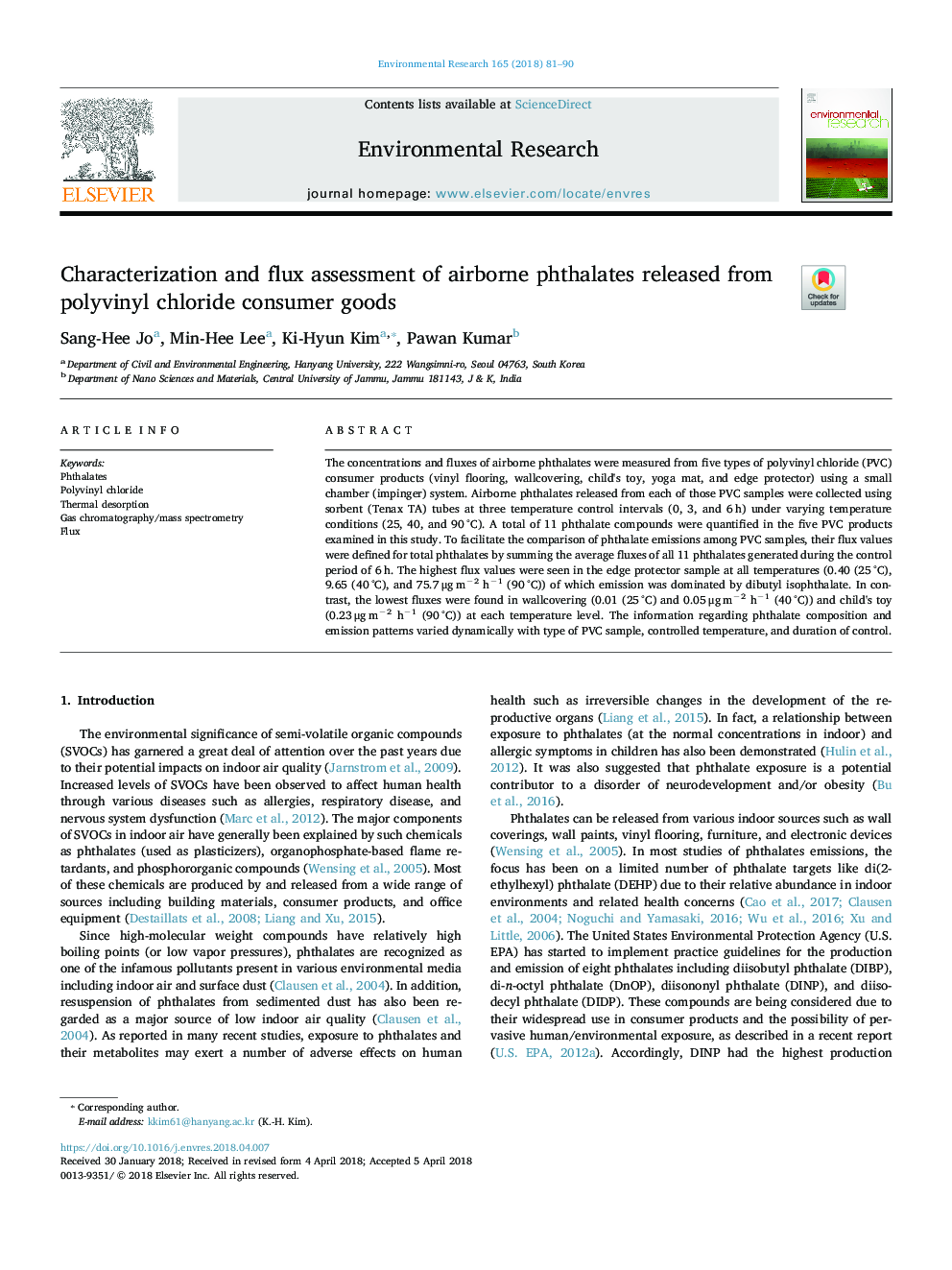| Article ID | Journal | Published Year | Pages | File Type |
|---|---|---|---|---|
| 8868918 | Environmental Research | 2018 | 10 Pages |
Abstract
The concentrations and fluxes of airborne phthalates were measured from five types of polyvinyl chloride (PVC) consumer products (vinyl flooring, wallcovering, child's toy, yoga mat, and edge protector) using a small chamber (impinger) system. Airborne phthalates released from each of those PVC samples were collected using sorbent (Tenax TA) tubes at three temperature control intervals (0, 3, and 6â¯h) under varying temperature conditions (25, 40, and 90â¯Â°C). A total of 11 phthalate compounds were quantified in the five PVC products examined in this study. To facilitate the comparison of phthalate emissions among PVC samples, their flux values were defined for total phthalates by summing the average fluxes of all 11 phthalates generated during the control period of 6â¯h. The highest flux values were seen in the edge protector sample at all temperatures (0.40 (25â¯Â°C), 9.65 (40â¯Â°C), and 75.7â¯Î¼gâ¯mâ2 hâ1 (90â¯Â°C)) of which emission was dominated by dibutyl isophthalate. In contrast, the lowest fluxes were found in wallcovering (0.01 (25â¯Â°C) and 0.05â¯Î¼gâ¯mâ2 hâ1 (40â¯Â°C)) and child's toy (0.23â¯Î¼gâ¯mâ2 hâ1 (90â¯Â°C)) at each temperature level. The information regarding phthalate composition and emission patterns varied dynamically with type of PVC sample, controlled temperature, and duration of control.
Related Topics
Life Sciences
Environmental Science
Health, Toxicology and Mutagenesis
Authors
Sang-Hee Jo, Min-Hee Lee, Ki-Hyun Kim, Pawan Kumar,
